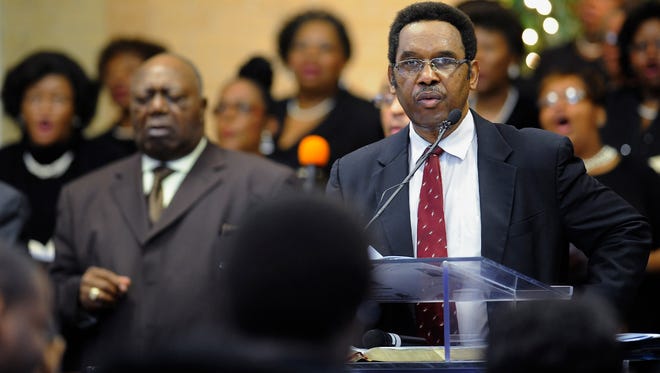Emancipation Proclamation observance looks to future

Jahrod Jackson will be thinking about his mother when he reads the Emancipation Proclamation at this year’s local observance.
“It’s an honor to read the Emancipation Proclamation. I’m really doing it especially for my mom who passed away in 2011. By doing this I know she’d be very proud of me,” said Jackson, a Park Crossing High School sophomore.
In line with the spirit and tradition of Montgomery’s observance day, organizers of the event Sunday wanted to choose a young person to read the proclamation.
“It’s a matter of trying to ensure that young people understand exactly what that proclamation means,” said Richard Bailey, a local historian and president of the Emancipation Proclamation Association of Montgomery.
To understand why it’s important to have youth involved in the remembrance, look no further than the Rev. Robert Graetz.
Graetz, a white Lutheran minister and strong ally of the civil rights movement, was brought to his first bus boycott meeting in 1955 by Robert Dandridge.
Couple wages 60-year fight for rights of others
“Dandridge was the same person who read the proclamation in 1919,” Bailey said.
To this day, Graetz still remembers the energy of the first bus boycott meeting he attended.
“It was an absolutely electrifying experience to be there. One of the things everyone remembered was the acceptance of the idea that we had done something world-shaking by standing up against the bus company,” Graetz recalled.
He’s now attended every Emancipation Proclamation remembrance day since he first moved to Montgomery from West Virginia in 1955.
“It’s always upbeat,” he said. “But it’s a recognition of history, marking the history of a people whose history had been stolen from them.”
The Emancipation Proclamation has been commemorated in Montgomery since 1866. Though President Abraham Lincoln signed the document Jan. 1, 1863, it wasn’t celebrated during the years that the Civil War persisted.
Throughout the centuries the way the proclamation is remembered has naturally evolved. It used to always involve a parade down Dexter Avenue and accounts from people who were once enslaved talking about the meaning of freedom. As that generation died, their children told their stories.
Montgomery: 150 years without slavery
Today, the remembrance always includes a speaker, excerpts from the Old and New Testaments and a reading of the proclamation by a young person.
Last year, famed civil rights attorney Fred Gray spoke at the 150th anniversary of the Montgomery emancipation observance.
“The Emancipation Proclamation was not just an emancipation for black folks and slaves, but it really was America herself freeing herself from slavery, which never should have existed in the first place,” said Gray, who represented both Rosa Parks and Martin Luther King Jr. during the civil rights era.
Tuskegee Mayor Lawrence “Tony” Haygood will speak this year at the Bryant Missionary Baptist Church, located in Normandale at 3645 Norman Bridge Road. The program begins at 4 p.m.
Haygood said he plans to address “where we are at this time in the African-American community as we look at the end of 2016 and look toward the future with a degree of uncertainty. … We have to look to the past for ways to move forward. We need to look to our community for answers so that we can continue to make progress.”
IF YOU GO
What: Emancipation Proclamation observance
When: 4 p.m. Sunday
Where: Bryant Missionary Baptist Church, 3645 Norman Bridge Road